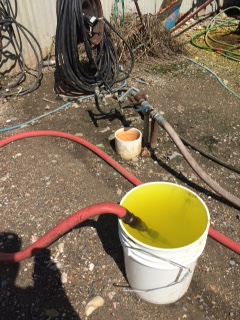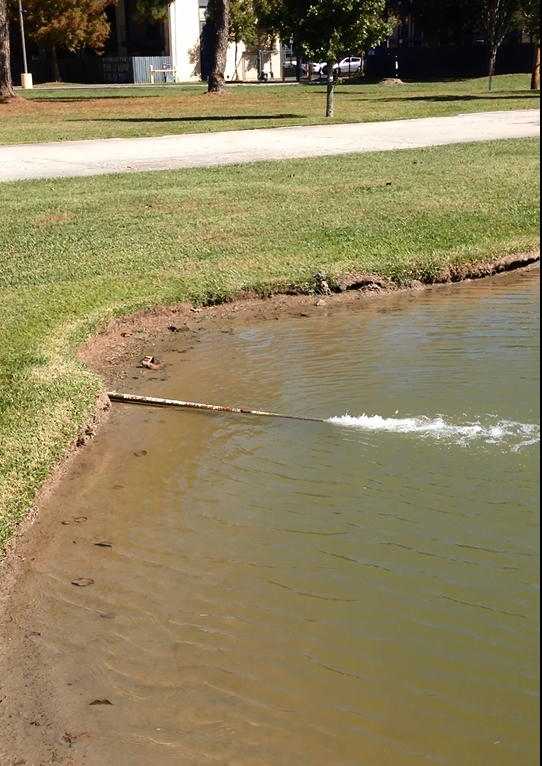Backflow Prevention Programs: Keys to Success
The implementation of a comprehensive cross connection control and backflow prevention program is often overlooked and considered non-critical due to time, cost, and associated burdens placed on customers and water system administrators. So, what is considered a successful program? The Merriam-Webster dictionary defines success as a favorable or desired outcome or the correct or desired result of an attempt. Let’s combine these definitions to read a favorable outcome of an attempt and apply to cross connection control and backflow prevention programs. As with any task, it is important to set goals and develop a plan of action to successfully develop, implement, and manage backflow programs.
The Importance of Setting Goals
Cross connection control and backflow prevention programs are typically put in place as a result of state regulations placed on water systems. Proper goal setting can significantly increase the chances of the program’s success. While compliance should be a key component of the goals set for the program, consider for a moment the purpose of the regulation. Isn’t the regulation in place to protect the drinking water? Why not make the protection of the drinking water the primary goal? So, if the drinking water supply is protected from contamination, then the program should be considered a success.
As anyone who has started a program knows, time and cost are inherent. However, a carefully thought out plan can minimize time and cost considerations without jeopardizing the integrity of the program. Surely, if a water system makes every effort to protect the drinking water and documents those efforts through appropriate record keeping, the regulatory requirements imposed by the state will be met!
In order to have a successful comprehensive backflow prevention program, consider setting goals in the following order:
- Protection of the potable water supply through risk mitigation
- Minimize costs without sacrificing the integrity of the program
- Regulatory compliance
Development of a Comprehensive Plan of Action
In keeping with the goals for the program, a plan of action should be established. AWWA M14 is a resource for guidance in setting up a plan. In general, the plan should consist of the following elements:
- Establishing Legal Authority
- Plan Review of New Construction
- Designating Approved Assemblies
- Testing and Maintenance Requirements
- Record Keeping
- Surveying Existing Facilities
- Training and Education
A brief description of each element is described below.
Establishing Legal Authority – This element should focus on ordinance creation and the development of a Policy and Procedures Manual. The ordinance should address all elements of the program with a statement for discontinuation of water service to a customer for non-compliance. The Policy and Procedures Manual should be a document that is explicit to the operations of the program with emphasis placed on how records are kept, where and how test reports are to be submitted, installation requirements, monitoring of plumbers/testers and their equipment, etc.
Plan Review of New Construction – Permitting of new construction should include a plan review by a person knowledgeable in the field of cross connection control and backflow prevention. The purpose of the plan review is to identify existing cross connections prior to construction. Recommended backflow protection methods can then be made and installed during construction to insure compliance with the program.
Designating Approved Assemblies – The ordinance should designate approved assemblies in accordance with regulatory requirements. Beware … non-approved devices exist!
Testing and Maintenance Requirements – The program should designate approved testing and maintenance requirements by identifying approved testing procedures. Only testing procedures by national organizations should be considered for the program since these procedures have typically been vetted by experts in the backflow industry. Manufacturer’s test procedures may not always produce proper results; however, manufacturer repair instructions are an excellent source of information when needed.
Record Keeping – Choosing the correct software is essential to minimizing the time and cost in accordance with the goals of the program. Several “backflow only” software packages are available and perform well for record keeping. In addition to the backflow only software, many water system billing software packages may contain an “add-on” module for backflow record keeping. These add on modules generally keep minimal records, such as next test date, which may suffice for very small water systems with few backflow preventers. Be thorough in your investigation and check whether a demo version is available to determine user friendliness.
Surveying Existing Facilities – Surveying existing facilities is the backbone of a comprehensive program. It also happens to be the most time consuming and costly component of implementing a program. As a result, it is imperative that the individual(s) performing the survey(s) be knowledgeable in the field of cross connection control and backflow prevention. The surveyor must be able to identify a hazard and classify it as a pollutant or contaminant and determine whether backsiphonage and/or backpressure conditions exist. In addition, the surveyor must determine whether isolation or containment, or both, protection is required at a facility in accordance with local, state, and national codes. All hazards and determinations should be documented in the selected software in order to have data readily available for distribution of letters to customers. In addition, user friendly software will be beneficial when customers call after receiving a letter.

Program success is dependent on identifying hazards such as these and educating the customer on the dangers of cross connections. It is important to note that each of the hazards shown can be mitigated through the use of an air gap at no cost to the customer while achieving every goal of the program!In keeping with the goal of protecting the water supply, consideration should be given to a evaluating the entire water system. While it is challenging to document every water use at a service connection (conditions change daily), reasonable effort can be put forth to evaluate the water system. One approach may be to perform drive-by surveys in residential or rural areas and technical surveys of commercial service connections. Drive-by surveys should focus on identifying customers with swimming pools (there are more than we think), lawn irrigation systems, ornamental fountains, auxiliary water, etc. An example of a hazard found at a farm during a drive-by survey is shown in Figure 1. This cross connection is a connection between the potable water supply and a herbicide used in the farming operations. Figure 2 documents the hazard of a cross connection between the potable supply and a pond at a commercial establishment during a technical survey.

